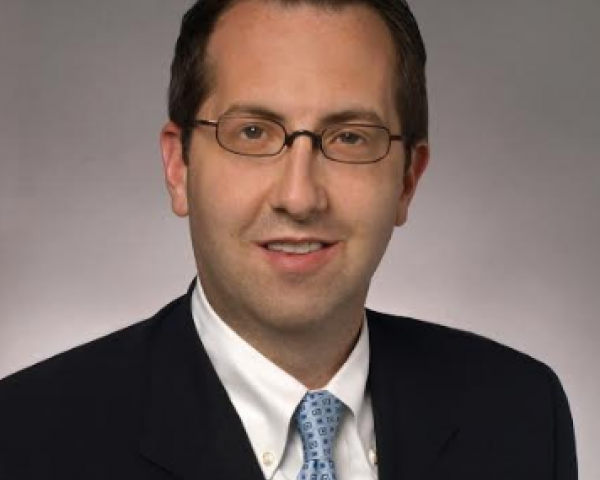Workers' Comp and Due Process Don’t Mix
If you are committed to foisting due process concerns onto existing workers' comp systems, you're probably just a lawyer looking for a payday.

If you are committed to foisting due process concerns onto existing workers' comp systems, you're probably just a lawyer looking for a payday.

Get Involved
Our authors are what set Insurance Thought Leadership apart.
|
Partner with us
We’d love to talk to you about how we can improve your marketing ROI.
|

Daryl Davis is a member of the American College of Occupational and Environmental Medicine and is sought after by governmental agencies, insurance carriers, risk managers and others in this field. Davis founded www.WorkersCompensationOptions.com, a company committed to WC and legal alternatives to WC.
At InsureTech Connect, startups -- unlike incumbents -- began with a key question: What problem do you have that I can solve for you?

Get Involved
Our authors are what set Insurance Thought Leadership apart.
|
Partner with us
We’d love to talk to you about how we can improve your marketing ROI.
|

Bram is a Managing Director and heath actuary, in Deloitte Consulting’s Insurance practice, focused on the Group, Voluntary, and Worksite sector. He is passionate about bringing the science back to actuarial science, and improving client’s analytical capabilities by unlocking the power of existing and emerging data, and creating tools that translate data into action.
Insurance providers are no longer able to compete primarily on price and are focusing their efforts on ways to please their customers.

Get Involved
Our authors are what set Insurance Thought Leadership apart.
|
Partner with us
We’d love to talk to you about how we can improve your marketing ROI.
|

Mike Morrissey is chairman of Protective Life, a Fortune 500 provider of life insurance, annuities and other financial products. Protective Life is owned by Dai Ichi Life Group, one of the world’s largest life insurance companies.
Previously, he was president and chief executive officer of the International Insurance Society (IIS) for 11 years. He continues his 30-year involvement in the leadership of the IIS as a member of its executive council and as its special adviser. He is a steering committee member of the World Economic Forum’s “Longevity Economy” initiative, as well as chairman of Legeis Capital, an alternative asset management firm.
Morrissey earned a BA from Boston College and an MBA from Dartmouth. He has completed the Harvard Business School Corporate Financial Management Program and has a Chartered Financial Analyst (CFA) designation.
Rather than worrying about status, ownership and hierarchy, think about the benefits of access, collaboration, trust and sharing.

Get Involved
Our authors are what set Insurance Thought Leadership apart.
|
Partner with us
We’d love to talk to you about how we can improve your marketing ROI.
|

Robin Roberson is the managing director of North America for Claim Central, a pioneer in claims fulfillment technology with an open two-sided ecosystem. As previous CEO and co-founder of WeGoLook, she grew the business to over 45,000 global independent contractors.
How can brokers adapt to the increasing complexity of the healthcare business, attract more customers and grow their businesses?

Get Involved
Our authors are what set Insurance Thought Leadership apart.
|
Partner with us
We’d love to talk to you about how we can improve your marketing ROI.
|

Sally Poblete has been a leader and innovator in the health care industry for over 20 years. She founded Wellthie in 2013 out of a deep passion for making health insurance more simple and approachable for consumers. She had a successful career leading product development at Anthem, one of the nation’s largest health insurance companies.
The most important response by insurers: They take steps -- risk management services -- to help prevent losses from occurring.

Get Involved
Our authors are what set Insurance Thought Leadership apart.
|
Partner with us
We’d love to talk to you about how we can improve your marketing ROI.
|

Patrick Hirigoyen is principal of the Hirigoyen Group, a public relations and communications consultancy with a specialty in insurance. Hirigoyen has a reputation as a strategic communications executive with a singular knowledge and understanding of the industry’s trends and issues.
If I don't know whether my car is getting the proper treatment, how the heck am I expected to figure out whether my doctor is doing the right thing?

Get Involved
Our authors are what set Insurance Thought Leadership apart.
|
Partner with us
We’d love to talk to you about how we can improve your marketing ROI.
|

Joe Markland is president and founder of HR Technology Advisors (HRT). HRT consults with benefits brokers and their customers on how to leverage technology to simplify HR and benefits administration.
Within 20 years, vendors might only sell insurance when it’s packaged together with other services.

Get Involved
Our authors are what set Insurance Thought Leadership apart.
|
Partner with us
We’d love to talk to you about how we can improve your marketing ROI.
|

Derek Klobucher is a brand journalist, content marketer and master digital story teller at SAP.
Legislative efforts in California on return-to-work have largely been limited to the voucher, an at-best-meager training program.

Get Involved
Our authors are what set Insurance Thought Leadership apart.
|
Partner with us
We’d love to talk to you about how we can improve your marketing ROI.
|
InsureTech Connect sent a clear message, that we have rapidly entered a new era that is more profound and important… a renaissance.

Get Involved
Our authors are what set Insurance Thought Leadership apart.
|
Partner with us
We’d love to talk to you about how we can improve your marketing ROI.
|

Denise Garth is senior vice president, strategic marketing, responsible for leading marketing, industry relations and innovation in support of Majesco's client-centric strategy.